For a lot of people, Goldenrod probably conjures up images of brilliant yellow blooms in the middle of summer. I like seeing goldenrod flowers too (for their color-not culinary purposes as the flowers are tough, with the exception of the well-known goldenrod tea) but the shoots and young growing tips are actually a vegetable that you can harvest in decent quantity, eat, and, possibly enjoy, if you can take some strong-flavored greens.
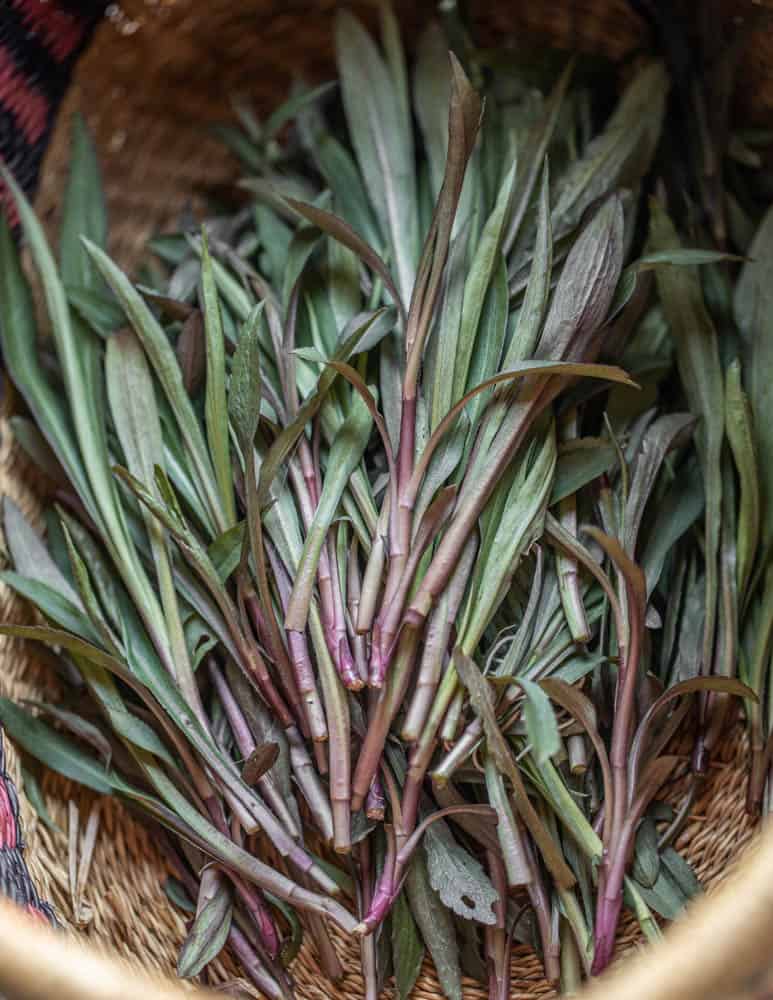
My first experience with goldenrod came a few years ago during one of my outings before my chef kitchen shift started. I was scouting a patch of Japanese knotweed someone had tipped me off to, and, everything looked great, until I got closer and noticed the plants looked sickly, with some irregularly yellowed and wilted-a sign plants have been sprayed. I knew I wouldn't be bringing those in for restaurant service.
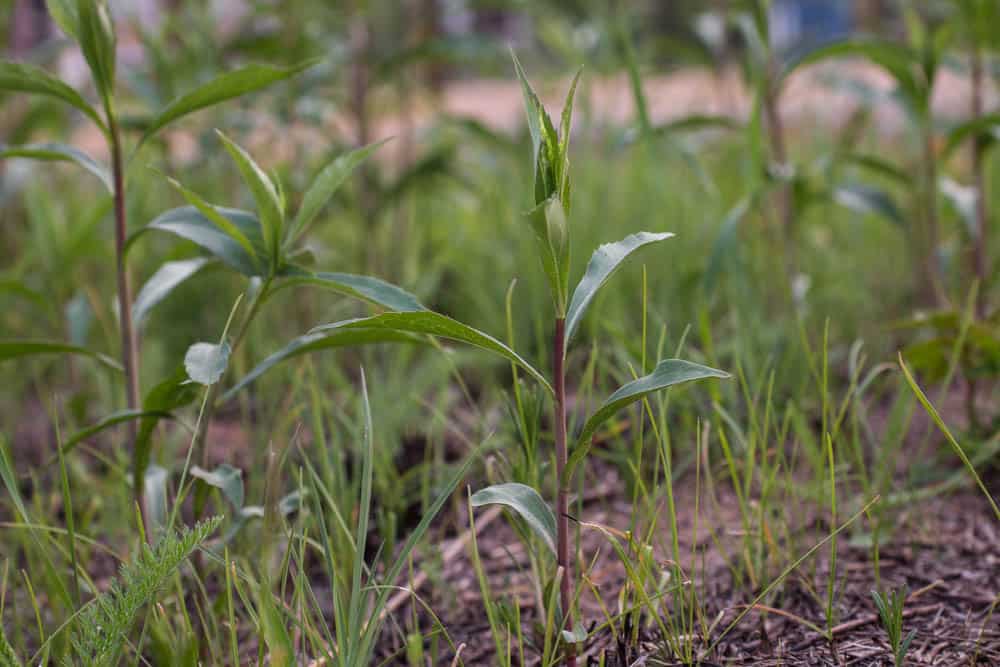
On the way back to the car, defeated, and not at all curious about what a meal seasoned with Glyphosate would taste like, I spied a few goldenrod shoots. I'd heard a few people mention that they eat the young shoots, so I brought a handful home as a consolation prize.
A nibble of some of the fresh leaves revealed a strong flavor, but I'd tasted worse. In fact, cooked up with some fish sauce, sesame oil and hot chili I thought the shoots were decent enough to eat a whole two-ounce serving.
Last year, on a Foray with my friend Linda Black Elk, a Native American Ethnobotanist, I was reminded of goldenrod again when she told me she enjoyed eating the tender tips/tops in early summer, comparing the flavor of the ones we sampled in Wisconsin to cilantro, which gave me another part of the plant to try.
For the record I think both tender shoots and tips are fine, but if pressed, I'd say I prefer the shoots with their larger amount of tender stem.
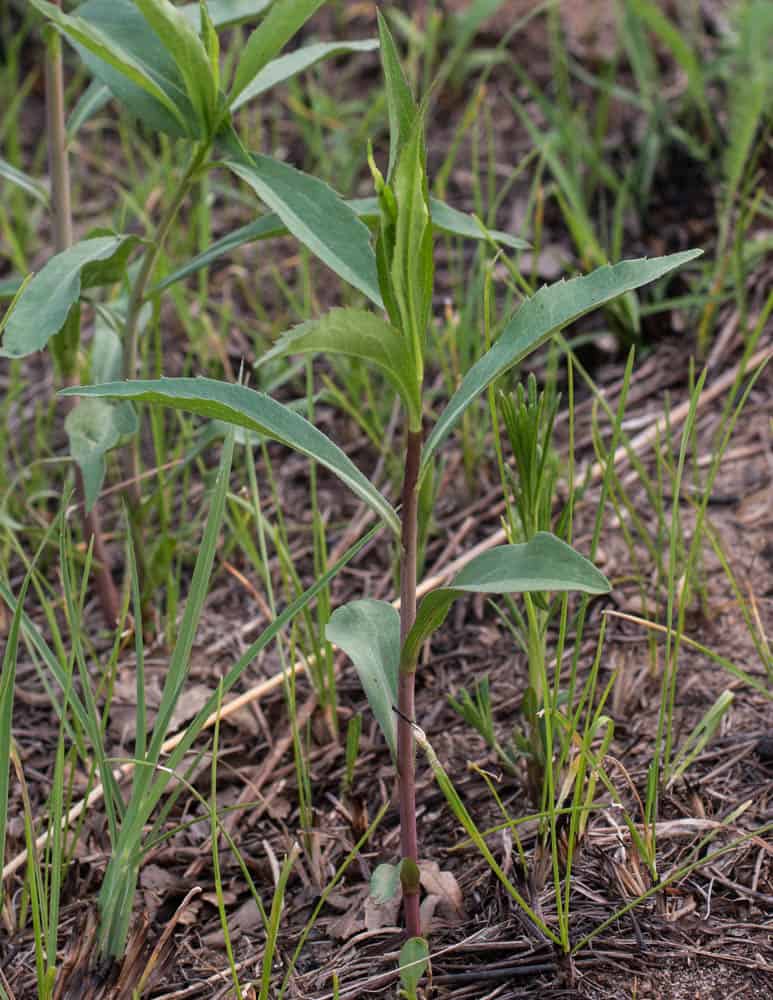
There's a lot of different species of Goldenrod, and flavor can apparently vary between them, so, know that for the purposes here, I've only eaten from the Canada Goldenrod complex (what I'd assume are Solidago canadensis and maybe one other).
I obviously can't speak for all species of them, but the ones I've eaten were fine: just don't judge them on a raw nibble from the field, and don't expect to eat half a pound of them like a hungry person could with a mild tasting plant like nettles.
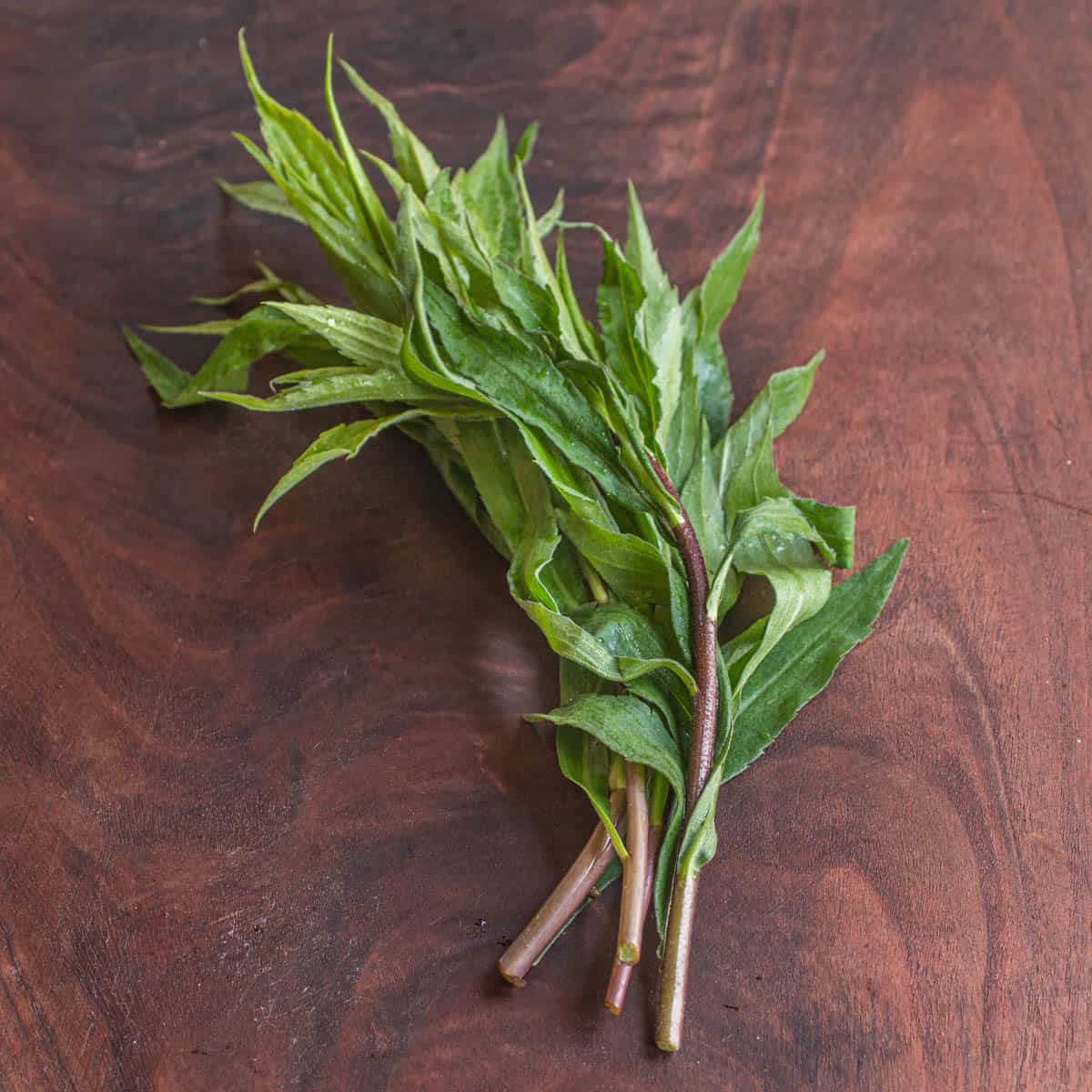
The Aster Flavor
Goldenrod shoots and young growing tips of the plant I've eaten are a good example of the taste I think is best described as "aster flavor". It's a strong taste, reminiscent of the herbaceous (albeit much milder) taste of celery to some. I taste aster flavor in a number of different plants in the Asteraceae / daisy family.
To clarify here, I'm not talking about plants in the genus asters here (they could very well have some of the same flavor, I just haven't tried them) but rather their cousins in the Asteraceae family that include many different plants like sochan, dandelions, sunflowers, and others.
Sunflower sprouts and high quality sunflower seed oil like the one produced by Smudes of Pierz Minnesota share notes of the flavor I'm describing here too, but in them the taste mingles with the flavor of sunflower.
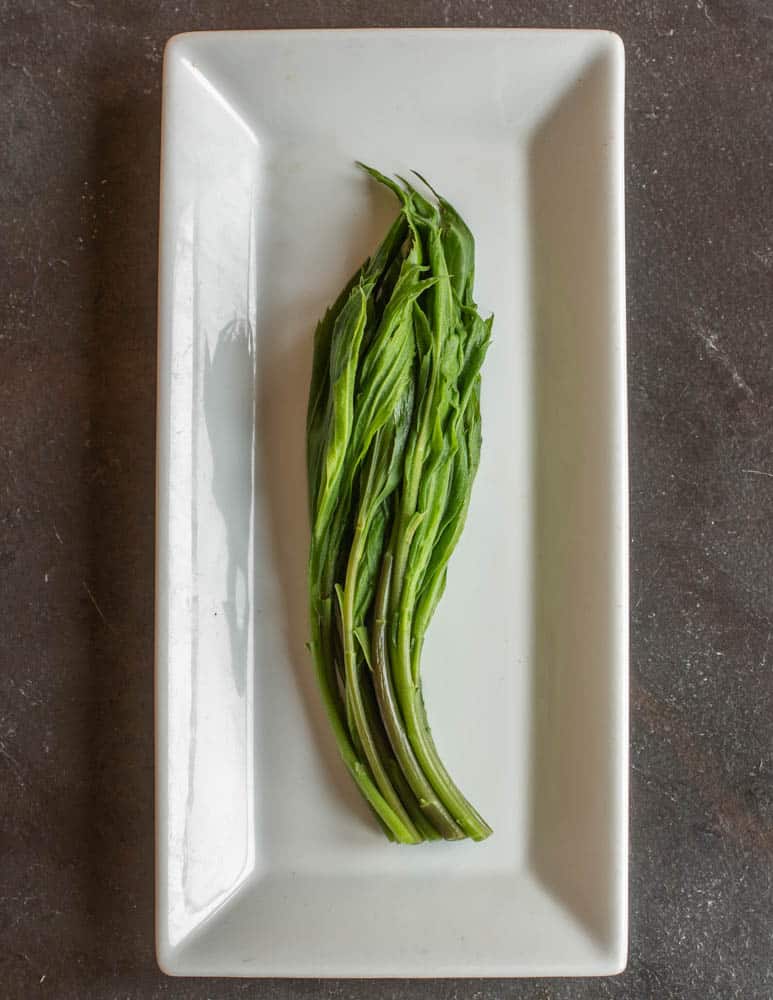
Tasting experiment
Out of all the plants I've tasted that have aster flavor, goldenrod shoots are one of the strongest tasting examples, sochan harvested at it's height maturity (and toughness) probably being a contender. But, dressed with some tasty sauce, or mixed with some other greens and seasoned, they're much more mild. With that in mind, I have a fun tasting experiment for you to try.
Here's the jist of the experiment: blanch a handful of shoots for a minute or two in salted water, then drain them and eat one, maybe two. As you eat, notice the flavor, and your reaction to it-good, bad, interesting, nice texture but too strong tasting, all-around awful, etc.
Next, take one of the same shoots and dip it or dress with a condiment you like. I've been eating ramp salsa verde on things again this year, but garlicky aioli, spicy mayonnaise spiked with sriracha or just your favorite aggressively seasoned, creamy, or acidic saucy thing will do. As you eat the shoot(s) dressed with a condiment, consider the flavor.
I think you'll find it much more mild and palatable, and, if you like strong-tasting greens like I do, maybe even (gasp) pleasurable, or at least interesting.
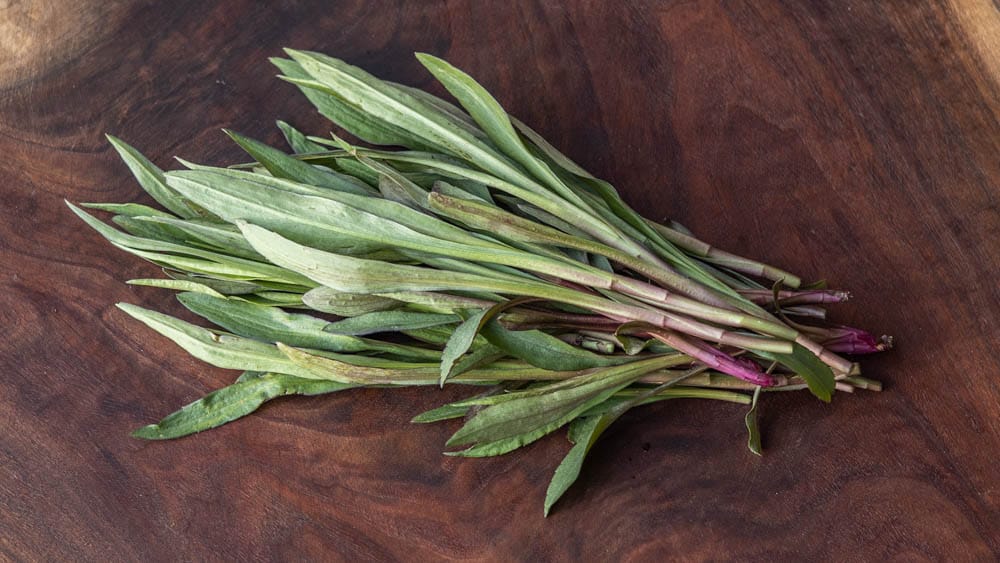
I used to have my cooks mindfully taste things like this: noticing how flavors work and compliment each other on the palate, specifically how adding one thing to another often isn't as simple as 1+1.
One thing I learned over all my years in the kitchen is that sometimes I don't truly know how something is going to come together and work until I put it in my mouth, chew it, and go through the entire eating process.
However you end up feeling about them, I think it's helpful to keep in mind that some of the Japanese sansai plants (a catch-all term for a variety of spring plants ranging from Knotweed, hostas, and shoots of the Japanese angelica tree) are probably much stronger tasting than any goldenrod shoots, and are eaten with relish every year, despite, or even because of the strong flavors every year in Japan.
Side note, I wrote a blurb for a great little book on the subject of Sansai (Eating Wild Japan) that just came out. I found it an interesting glimpse into another culinary world with plenty of obscure tidbits and preparations for sansai, many of which I'd never heard of before-it's a good read if you're interested on the topic.
The recipe here is a fun one loosely based on Japanese and Korean combinations. It's good with many different greens, but especially good with stronger tasting ones as it has a lot going on: fish sauce umami, nutty seeds, flavorful oil, acid, and heat from the chili. You could substitute many different nuts of seeds in the sauce, but sunflowers, and Smudes oil are local to me, and a combination I really enjoy.

Goldenrod Shoots with Sunflower Vinaigrette
Equipment
- 1 3 quart soup pot or similar for blanching
Ingredients
- 4 tablespoons sunflower seeds or your favorite nuts or seeds
- 1 tablespoon fish sauce
- ½ tablespoon apple cider vinegar or rice wine vinegar
- 1 tablespoon Smude’s sunflower oil
- 1 tablespoon maple syrup
- 2-4 oz Goldenrod shoots lower leaves removed to reveal the “shoot” (optional)
- Hot chili preferably crushed red pepper flakes but a dash of hot sauce can do*
Instructions
- Blanch the goldenrod shoots or other greens in boiling salted water until just tender (1 min or to your taste) then spread out on a towel to drain.
- Toast the seeds or nuts, then grind to a paste in a mortar and pestle, and stir in the remaining ingredients.
- Toss the sauce well with the greens, double check the seasoning, adjust as you see fit for salt and sugar, and serve room temperature or cooled.

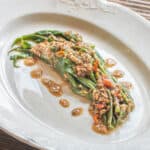
Mike
Goldenrod is definitely an acquired taste. I harvested some s. gigantea leaves and flowers for the first time this year, and am surprised at how strongly these ones smell similar to black pepper after drying. Have you experienced a peppery smell from goldenrod before?
Alan Bergo
Hey Mike! No I haven't. They're definitely an acquired taste, but I have some Hmong and Korean friends who just love the strong flavor. I can do them in small amounts.
Taija
Ok I just did read: The flowers taste honey-like and make a delicious syrup. They refine cakes, desserts and ice cream dishes. Well I am waiting to harvest. Did you ever try to harvest the flowers?
Taija
Are you here talking from the plant „ solidago“? Just want to make sure I am translating correctly. Are there any plants of the „ solidago“ family I can not harvest? Well I just want to be sure………American goldenrods were introduced as ornamental plants and are now one of the most common invasive neophytes in Switzerland. So it is this plant??!! Ok so if so lets eat it up!
Alan Bergo
Hi Taija. There's a lot of different Solidago plants out there. I'm cooking with S. candense here. It's important to know that they have a strong flavor that won't be for everyone. Flavor can differ from species to species too. They're a novelty and I don't sit down and eat piles of them. The flowers are nice in tea.
Pandora
Hi Taija!
I came here looking for recipes for goldenrod as it grows well in Germany too. In German it is called Goldrute. It is delicious dropped in some hot oil and cooked till Crispy or fried in a little butter with a bit of wild garlic too. Just take the tender top part off.
Alan Bergo
Thanks Pandora.
Indy
I'm so excited to try this!
Alan Bergo
Just know that they have a strong flavor. Definitely an acquired taste.
Indy
I made the dish (several months ago)! It was amazing. I had to improvise to do with what we had on hand (horror, we had no fish sauce) and I harvested late (but the greens weren't TOO bad), so all in all, it probably wasn't as good as it could have been, but it was still edible (which is a change from the greens I started with). Thank you for writing and posting this recipe!
Alan Bergo
Hey thanks Indy. They're definitely an acquired taste. The strong flavor makes a great little side dish or add-on to a bowl of noodles like you would kimchi.
Ann
Hi, thanks for your site! Question about "shoots" from a newbie. Are the shoots the tender, new growth? Or are you picking/cutting off at ground level?
Alan Bergo
Either.
Paulina
Is goldenrod considered an edible in the US, legally? Do you know by any chance if there is some research into that? I am trying to figure out what is the legal status of it, and can't find anything anywhere.
Alan Bergo
It is legally edible harvested from private property in all 50 states. Public property is more murky.
Will K.
I'm definitely going to give this a try. The only goldenrod I've used before in the kitchen is sweet goldenrod, and that for tea, although I've thought the dried leaves might be good in combination with bee balm in a sausage.
Alan Bergo
Thanks Will. It's an interesting plant, a novelty for most people, but some of my friends enjoy them regularly through the summer in different ways. I always cook them.
Mike
Hi there!
I just found your website recently and, as a new forager, I am absolutely enamored of the resource you have created here. I do have one small critique/ suggestion, coming from a new fan: please put dates on your articles! As I am going through your archive and looking to build a mental calendar of foraging and recipes, knowing when these edibles are in season near you would be a great help.
Thank you again, I have already pre-ordered your book and I can't wait!
-Mike
Alan Bergo
Thanks Mike. Writing articles online is more complex than meets the eye, with many different facets I have to take into account. Suffice to say I won't be going back and putting dates in everything. Thanks for the pre-order, I really appreciate it.